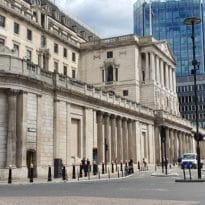Knowing the respective benefits of investment trusts and open-ended vehicles can help clients make more informed decision towards their investment journey and how they might achieve their financial objectives. Jock Glover, strategic relationships director, Square Mile Investment Consulting and Research, delves into the structures.
Open-ended investment vehicles, or unit trusts and OEICs, and closed-ended vehicles, such as investment trusts and investment companies, are both categories of pooled investment strategies offering investors access to a portfolio of underlying assets. However, they have distinct structures, and while neither is inherently better than the other, one may be more appropriate in meeting an investor’s objectives, depending on individual requirements or circumstances. These structural differences may work in a strategy’s favour, although there may be times when these nuances act as a drag on performance or affect its risk profile.
The core elements a fund selector should consider when assessing open-ended funds and investment trusts are broadly the same. Performance, risk, the investment team managing the strategy, their process and philosophy and the probability that they can consistently meet their explicit investment objectives all play a part in the analysis of both types of funds. However, their points of differentiation require separate consideration.
Open-ended funds are collective investment schemes where investors buy and sell units directly from the fund at its current Net Asset Value (NAV) price. These units are constantly created and cancelled by the fund’s managers to reflect investor demand and are typically priced daily, providing liquidity and the flexibility for investors to enter or exit the fund on a regular basis.
Investment trusts are closed-ended investment vehicles with a fixed number of shares issued through an initial public offering (IPO) in the same way as any other publicly listed company. Their shares are traded on a stock exchange where their prices can fluctuate independently of the NAV of the strategy’s underlying assets.
As publicly traded, limited companies, investment trusts have a board of independent non-executive directors (NEDs), responsible for the governance of the strategy. While OEIC umbrellas also have boards, their independence is not as marked with representatives of the asset manager often sitting alongside NEDs. An investment trust’s board has a fiduciary duty to ensure shareholders’ interests are protected, the trust’s manager adheres to their stated mandate and that performance is in line with expectations. This additional level of independent due diligence can act as a significant advantage, but it is essential to analyse the board’s efficacy. This analysis should assess its composition, its independence, its members’ experience and competence, its diversity, and its alignment with shareholders.
Naturally, costs are an important consideration in the analysis of any type of strategy as they can act as a drag on an investor’s overall returns. Any fees levied should be assessed in the context of how appropriate they are and whether they offer investors value for money. The value provided by the strategy is determined by both the access gained to the market and the value added by the fund managers. In the case of investment trusts, the value added by the board is also a consideration.
An investment trust’s share price will fluctuate throughout the trading hours of the exchange on which it is listed, depending on demand and market sentiment towards the assets in which it invests. This means the share price may trade above or below its net asset value, leading to a discount or premium. The board can dampen this volatility through the implementation of a discount control policy. This may see it set a trigger point at which they will buy back shares in the trust to reduce any discount. This discount/premium play off does not apply to unit trusts as they are priced solely on their underlying NAV, but it can work in investors’ favour. Discounts can provide a cheap entry point for investors to take a position in an investment trust, enhancing returns should sentiment turn in their favour and the discount narrow or move to a premium. The probability of this happening should help determine the suitability of an investment trust as part of an overall portfolio.
The investment trust structure also allows for the deployment of gearing, where the company can borrow money to make additional investments, something which open-ended vehicles cannot draw on. This can amplify both investment gains and losses and the income derived from the investments. More broadly, gearing is likely to increase the volatility of returns depending upon the magnitude of its use and the prevailing market conditions. The impact this can have on returns, both positive and negative, any associated risks means that gearing should feature as part of an assessment of a trust’s likelihood of meeting its expected outcome and the trajectory of potential returns.
Liquidity forms another important analysis point. Open-ended vehicles may need to be able to sell underlying investments to meet any large-scale redemptions or have sufficient cash reserves to be able return capital to investors on demand, which in itself can act as a drag on performance. This can restrict the universe of assets in which they can invest. By contrast, as investors buy and sell shares in investment trusts themselves, they are not constrained by the same liquidity requirements freeing their managers to invest in a much wider range of assets, including those which may be difficult to dispose of should there be a run on markets, such as property or private equity. Investment trust managers can therefore buy or sell holdings at a time they deem is appropriate, rather than being dictated to by wider investor sentiment.
The treatment of income also creates a point of distinction. Unit trusts must distribute all income generated by the strategy’s underlying assets to investors during each accounting period. By contrast, investment trusts can retain up to 15 per cent of generated income, enabling them to smooth distributions by supplementing dividend payments from revenue reserves when required. Several trusts did this during the Global Financial Crisis, enabling them to maintain or grow their dividends when the dividends of their underlying holdings dropped. This level of predictable and, in many cases, growing dividend distribution can make investment trusts very compelling for investors for whom steady income streams play an important part of their financial wellbeing, such as those nearing or in retirement.
Open-ended and closed-ended funds may be two sides of the same investment coin with both promising to deliver returns through exposure to a diversified pool of underlying assets. However, the distinctions between their structures may affect an investor’s journey towards meeting their financial objectives. While this creates a further level of due diligence for advisers and paraplanners in determining the suitability of one structure over the other, it also further demonstrates the added value which can be offered to clients in helping them make more informed decisions to secure their financial wellbeing.



























